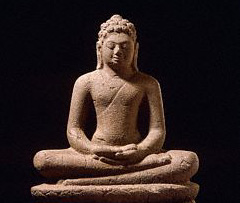| The Thinking type prefers to make judgements based on objectively, analytically and impersonally considering the facts, usually ordering them according to "cause and effect". The T values being able to stand back from the situation at hand, maintaining a cool, rational state of mind in order to honestly and fairly assess what's happening and then find a solution. Because the Thinker is most concerned with discerning the truth and doing what is fair, other types tend to see Ts as impersonal, ignoring the human or feeling aspects of the situation and being overly critical. Ts have as many emotions as other types, yet they want to avoid clouding important judgements with feelings. Striving for clarity, the T is most comfortable in the world of abstract thought, ideas and logical principles. The T is very good at finding flaws in a system and how to improve it because she cares about the results. Other adjectives for Ts: reasonable, aloof, competitive, objective, "outside the box", precise, results-oriented, concise, organized, driven, and just. How Ts can strengthen their type: in planning projects, allow for ways to communicate or collaborate with a more personal style. Imagine yourself as being another person you know and imagine what they might be feeling. Discuss experiences with your opposite type, the F, and share your values. |
 |
 |
Thinking and FeelingWhen Jung studied human behavior, he noticed that people have the capability to make decisions based on two very different sets of criteria: Thinking and Feeling. When someone makes a decision that is based on logic and reason, they are operating in Thinking mode. When someone makes a decision that is based on their value system, or what they believe to be right, they are operating in Feeling mode. We all use both modes for making decisions, but we put more trust into one mode or the other. A "Thinker" makes decisions in a rational, logical, impartial manner, based on what they believe to be fair and correct by pre-defined rules of behavior. A "Feeler" makes decisions on the individual case, in a subjective manner based on what they believe to be right within their own value systems. We are making decisions in the Thinking mode when we:
We are making decisions in the Feeling mode when we:
Some decisions are made entirely by Thinking or Feelings processes. Most decisions involve some Thinking and some Feeling. Decisions that we find most difficult are those in which we have conflicts between our Thinking and Feeling sides. In these situations, our dominant preference will take over. Decisions which we find easy to make and feel good about are usually a result of being in sync with both our Feeling and Thinking sides. excerpted from: <http: The Four Preferences > |
 |
| Going into my T function now, I would like to take a look (as in "analyze") three books on Literature and Type. They are grouped on three pages, 1) Shakespeare and Type, 2) Literary Characters and Type, and 3) Writing characters with type in mind. Please click on these icons on the above left. |
